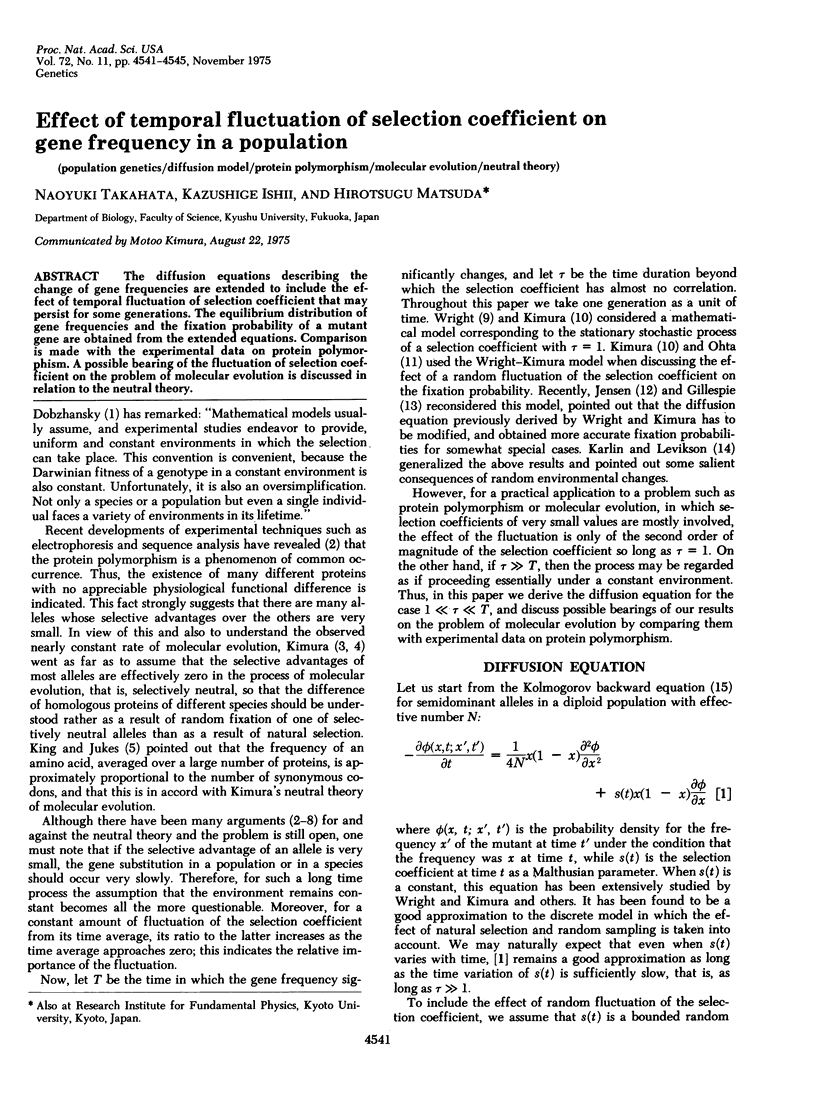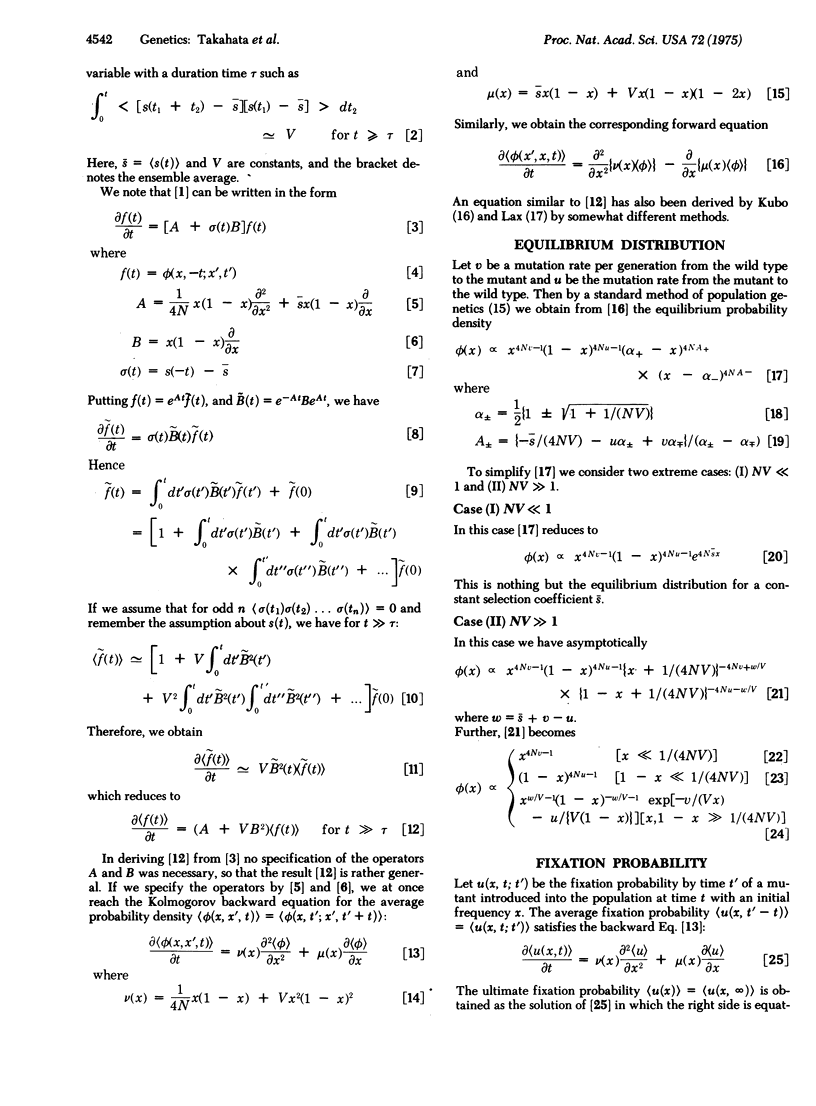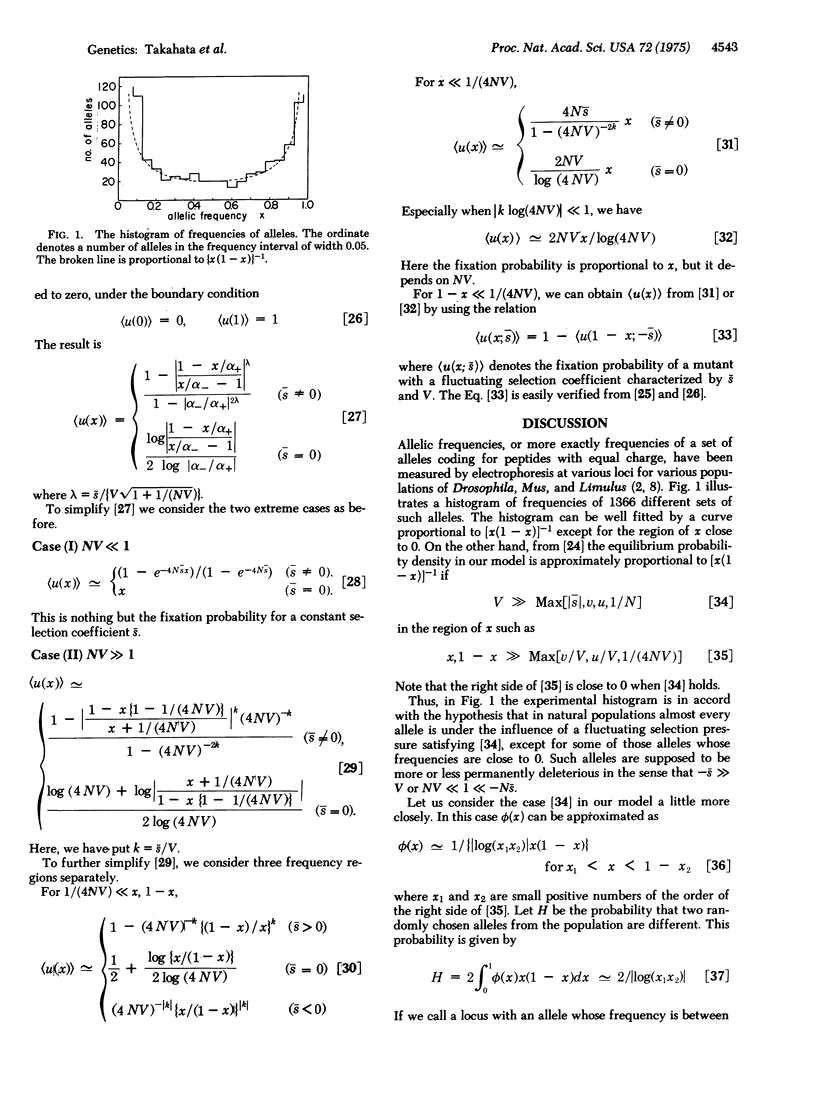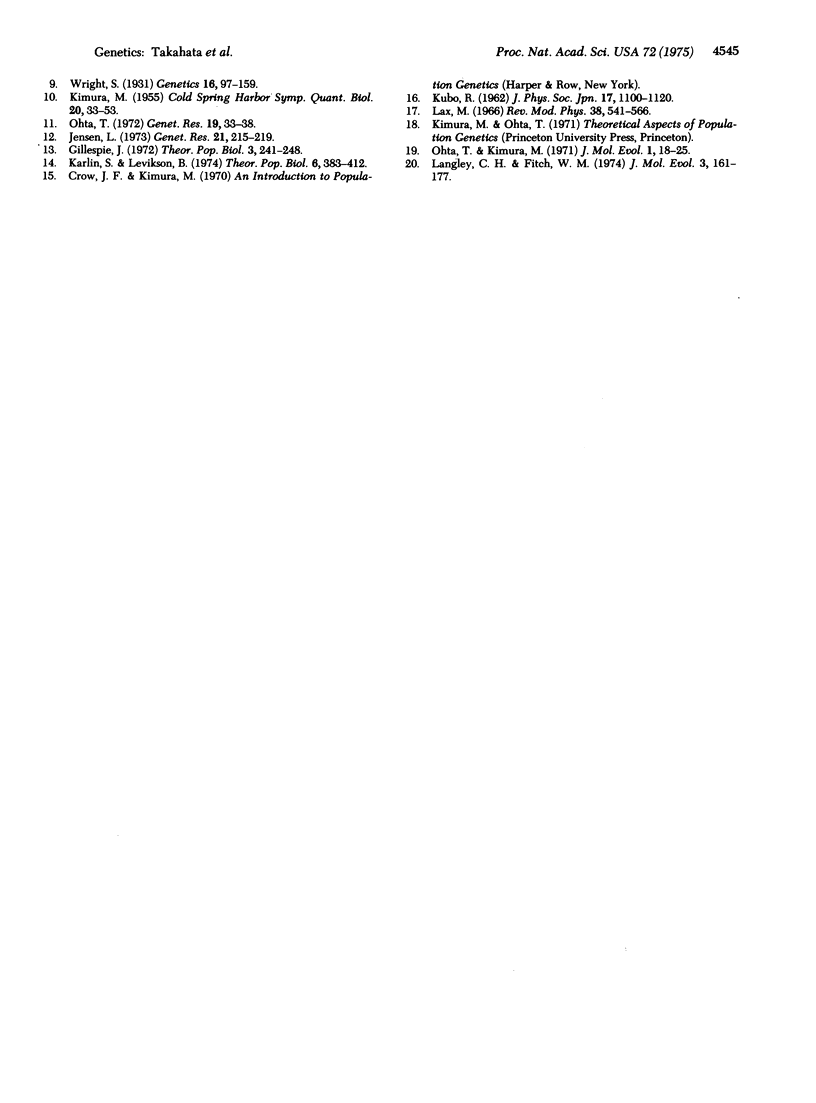Abstract
The diffusion equations describing the change of gene frequencies are extended to indlude the effect of temporal fluctuation of selection coefficient that may persist for some generations. The equilibrium distribution of gene frequencies and the fixation probability of a mutant gene are obtained from the extended equations. Comparison is made with the experimental data on protein polymorphism. A possible bearing of the fluctuation of selection coefficient on the problem of molecular evolution is discussed in relation to the neutral theory.
Full text
PDF




Selected References
These references are in PubMed. This may not be the complete list of references from this article.
- Ayala F. J., Tracey M. L., Barr L. G., McDonald J. F., Pérez-Salas S. Genetic variation in natural populations of five Drosophila species and the hypothesis of the selective neutrality of protein polymorphisms. Genetics. 1974 Jun;77(2):343–384. doi: 10.1093/genetics/77.2.343. [DOI] [PMC free article] [PubMed] [Google Scholar]
- Crow J. F. The dilemma of nearly neutral mutations. How important are they for evolution and human welfare? J Hered. 1972 Nov-Dec;63(6):306–316. doi: 10.1093/oxfordjournals.jhered.a108305. [DOI] [PubMed] [Google Scholar]
- Gillespie J. H. The effects of stochastic environments on allele frequencies in natural populations. Theor Popul Biol. 1972 Sep;3(3):241–248. doi: 10.1016/0040-5809(72)90001-9. [DOI] [PubMed] [Google Scholar]
- Jensen L. Random selective advantages of genes and their probabilities of fixation. Genet Res. 1973 Jun;21(3):215–219. doi: 10.1017/s0016672300013409. [DOI] [PubMed] [Google Scholar]
- KIMURA M. Stochastic processes and distribution of gene frequencies under natural selection. Cold Spring Harb Symp Quant Biol. 1955;20:33–53. doi: 10.1101/sqb.1955.020.01.006. [DOI] [PubMed] [Google Scholar]
- Kimura M. Evolutionary rate at the molecular level. Nature. 1968 Feb 17;217(5129):624–626. doi: 10.1038/217624a0. [DOI] [PubMed] [Google Scholar]
- Kimura M., Ohta T. On some principles governing molecular evolution. Proc Natl Acad Sci U S A. 1974 Jul;71(7):2848–2852. doi: 10.1073/pnas.71.7.2848. [DOI] [PMC free article] [PubMed] [Google Scholar]
- King J. L., Jukes T. H. Non-Darwinian evolution. Science. 1969 May 16;164(3881):788–798. doi: 10.1126/science.164.3881.788. [DOI] [PubMed] [Google Scholar]
- Langley C. H., Fitch W. M. An examination of the constancy of the rate of molecular evolution. J Mol Evol. 1974;3(3):161–177. doi: 10.1007/BF01797451. [DOI] [PubMed] [Google Scholar]
- Ota T. Fixation probability of a mutant influenced by random fluctuation of selection intensity. Genet Res. 1972 Feb;19(1):33–38. [PubMed] [Google Scholar]
- Ota T., Kimura M. On the constancy of the evolutionary rate of cistrons. J Mol Evol. 1971;1(1):18–25. doi: 10.1007/BF01659391. [DOI] [PubMed] [Google Scholar]
- Wright S. Evolution in Mendelian Populations. Genetics. 1931 Mar;16(2):97–159. doi: 10.1093/genetics/16.2.97. [DOI] [PMC free article] [PubMed] [Google Scholar]


